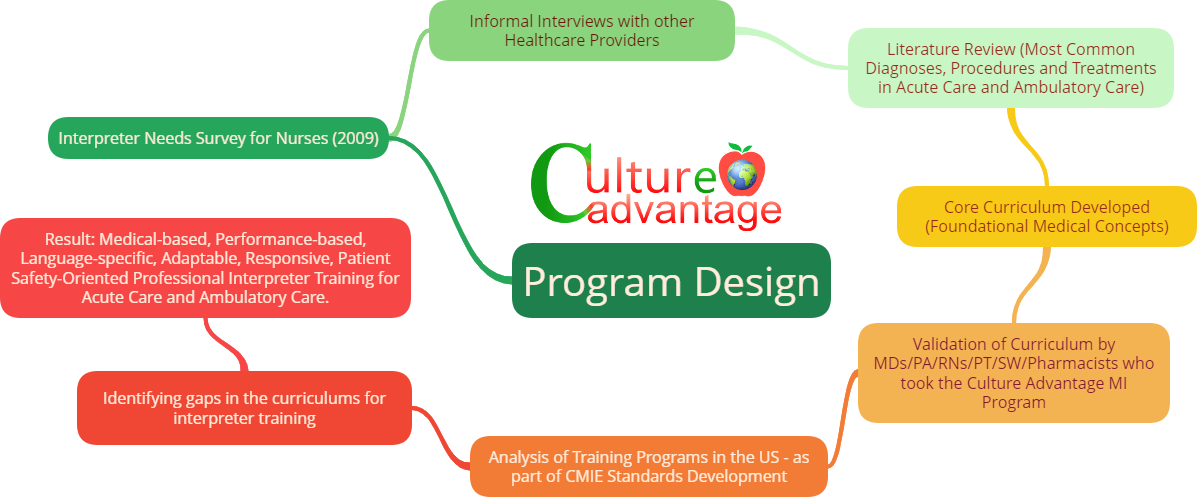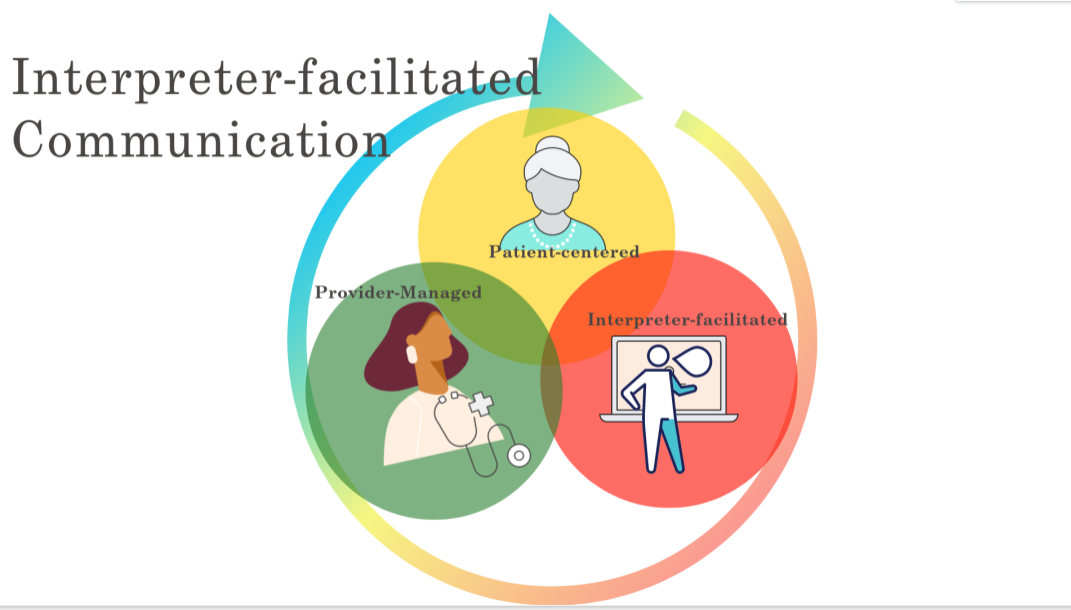
Proprietary Culture Advantage Curriculum, designed by Marlene Obermeyer, RN

As an RN, with hands-on experience in bedside nursing, charge nurse and advocate experience, I have worked with patients with limited proficiency in the front-lines of healthcare. I have worked with both adhoc and "trained" interpreters. I came to experience the general medical knowledge deficit of training programs, and the inadequate preparation of interpreters to work in the acute care setting, where their knowledge of medical concepts in BOTH languages is critical.
I. Interpreter Needs Survey for Nurses.
In 2009, I conducted an online survey of over 750 nurses working in different areas of healthcare.
The results showed that at least 40% of the respondents were concerned about the clinical accuracy of medical interpreters.
Question: What is your major concern about working with interpreters?
Total: 785 respondents.
- Accuracy (Misinterpretation, saying the correct thing, wrong treatment, etc.)
- Specific Medical Knowledge/Ability to explain terminology (Can they convey complex medical information, etc.)
- Training and Skills (Lack of training)
- Ethics/Confidentiality (HIPAA, privacy, use of family, etc.)
- Access and Availability (Can't get hold of interpreter, not available, etc.)
- Technical Challenges (Telephonic vs. Face-to-Face)
- Communication (Communication and Understanding of Information, but not accuracy)
- Professionalism of Interpreters (punctuality, accommodating, giving feedback,)
- Language and Cultural Issues (Understanding and conveying dialect/idioms)
- Time and Cost
- Language and Communication: Interpreter's inability to speak English well, unable to understand interpreter, etc.
- Other: Nurse-patient relationship, trust in interpreter, no concerns (Working with good interpreters, no problems, etc.)
- Other (No category): (I don't know, no experience with interpreters, etc.)
The Culture Advantage Program is focused on ensuring clinical accuracy of interpretation by training and evaluating students in BOTH languages.
